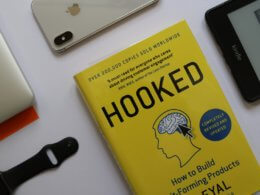The National Council on Problem Gambling defines problem gambling as, “Gambling behavior which causes disruptions in any major area of life: psychological, physical, social or vocational.” This may include pathological and compulsive gambling, which is a form of addiction that grows worse as time progresses.
Problem Gambling Statistics
The National Council on Problem Gambling (NCPG) and other sources note the following statistics.
- 15 percent of Americans gamble at least once per week.
- Approximately two to three percent of Americans meet the criteria for problem gambling. That’s around 6 million adults and about a half million teens.
- Youth risk developing a gambling problem at a rate of about two to three times that of adults, and approximately 6 percent of college students in America have a gambling problem.
- About 40 percent of people with a gambling problem started gambling before the age of 17.
- Nevada has the highest prevalence of problem gambling in the country, at about 6.4 percent.
Effects of Problem Gambling
There are an array of harmful effects arising from problem gambling, including:
- NCPG notes the annual cost associated with gambling (crime, addiction, and bankruptcy) is $17 billion.
- Approximately 76 percent of problem gamblers are likely to have a major depressive disorder, according to the NCPG.
- The NPCG also says children of problem gamblers are at higher risk for some behaviors including problem gambling, tobacco use, and drug use.
- Oregon Problem Gambling Resource states that about 10 to 17 percent of children of problem gamblers and about 25 to 50 percent of spouses of problem gamblers have been abused.
- Georgia State University (GSU) estimates that about 50 percent of problem gamblers commit crimes, and about 2/3 of those crimes were directly related to the gambling.
- GSU also notes that 73 percent of people who are incarcerated are identified as problem gamblers.
- An Australian study found that one in five suicidal patients had a gambling problem.
Who’s at Risk
The Mayo Clinic identifies the following risk factors for developing a gambling problem.
- Behavior or mood disorders
- Age – the problem develops more frequently in young people
- Family influence – whether parents and other close adults were gamblers
- Personality characteristics such as high level of being competitive, or easily bored
Further, Problem Gambling Prevention identifies certain risk factors in teens, including:
- Being male
- Living in a single-parent household
- Having a below median household income
- Early initiation – starting before 8th grade
- Playing sports at school
- Experiencing problems at home
- Having low-self esteem
Online Gambling
Online gambling casinos earned $29.3 billion in 2010, an increase of 12 percent.Morgan-Stanley projects that online gaming in the United States will be worth $9.3 billion by 2020. Currently, some states allow online gaming, including Nevada, New Jersey, and Delaware.
College Students and Online Gambling
The fastest growing segment of the population involved in online gambling is college students. A University of Connecticut study showed:
- 23 percent of college students had gambled online
- 6.3 percent did so weekly
- In the group that frequently gambled online, 61 percent were pathological gamblers.
- In comparison, only 5 percent of non-internet gamblers were considered to have a gambling problem.
Another report on online gambling noted that the easy accessibility and frequency of play of online gambling present a significant risk of problem gambling.
Online Gambling Problem









